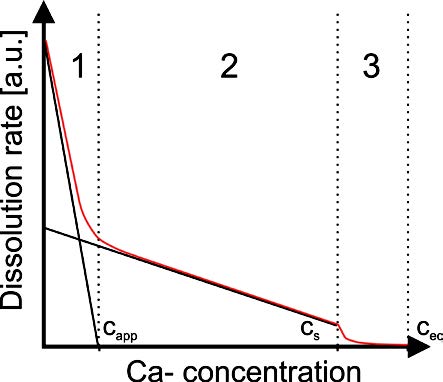Physics and Chemistry of Dissolution on Subaerialy Exposed Soluble Rocks by Flowing Water Films
DOI:
https://doi.org/10.3986/ac.v36i3.169Povzetek
The basic process active in the formation of subaerial features on karst rocks is chemical dissolution of limestone or gypsum by water films flowing on the rock surface. The dissolution rates of limestone and gypsum into thin films of water in laminar flow are given by F = α(ceq-c), where (ceq-c) is the difference of the actual concentration c in the water film and the equilibrium concentration ceq with respect to the corresponding mineral. Whereas for gypsum α is determined by molecular diffusion the situation is more complex for limestone. Experiments are presented, which show that for high undersaturation, c<0.3ceq, the rate law is F = α( 0.3ceq-c) ,and α becomes higher by about a factor of ten than for the rates at c>0.3ceq. These rate laws are used to calculate denudation rates on bare rock surfaces exposed to rainfall with differing intensity. The estimations are in reasonable agreement to field data. Starting from the experiments on the formation of Rillenkarren on gypsum performed by Glew and Ford (1980), we suggest a new relation between their length from the crest to the “Ausgleichsfläche” and the inclination of the rock surface. This is also applied to field data of Rillenkarren on limestone provided by J. Lundberg and A. Gines. In view of the many parameters influencing the formation of Rillenkarren these correlations can be considered as satisfactory.
Prenosi

Prenosi
Objavljeno
Kako citirati
Številka
Rubrike
Licenca
Avtorji jamčijo, da je delo njihova avtorska stvaritev, da v njem niso kršene avtorske pravice tretjih oseb ali kake druge pravice. V primeru zahtevkov tretjih oseb se avtorji zavezujejo, da bodo varovali interese založnika ter da bodo povrnili morebitno škodo.
Podrobneje v rubriki: Prispevki




